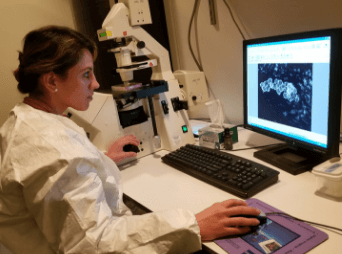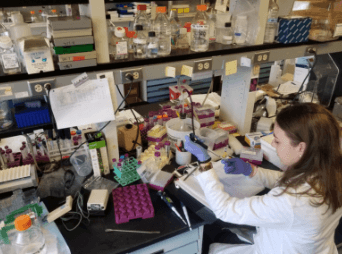Our Strategies to Prevent and Cure Type 2 Diabetes (T2D)
Type 2 diabetes means the body does not use insulin properly. Over time, it can no longer produce enough insulin to keep blood sugar levels within a healthy range. Adults diagnosed with diabetes in the United States have more than tripled over the past 20 years. The cost of diabetes to our healthcare system is hundreds of billions of dollars each year.

Scientific Challenges to T2D Research
- Rodents don't replicate human type 2 diabetes in the lab
- Activating “beige” fat cells in humans may alleviate diabetes, but they're difficult to isolate and study in humans
- T2D is a multi-organ disease affecting insulin secretion by pancreatic beta cells and insulin signaling to its “target tissues” of liver, muscle, and body fat. This makes it extremely difficult to determine the cause of the disease.
Our scientists have...
Discovered benefits of beige fat
In 2016, the Corvera Lab published that all of our fat can generate beige fat, which is now being studied as a potential therapy to treat type 2 diabetes (T2D), obesity, and cardiovascular disease.
Produced beige cells in the lab as a potential therapy
Further research proved that rare beige cells, known to attack fat, can be obtained from humans. Our scientists are removing beige cells from people with T2D, reproducing millions of those cells in the lab, and then implanting them back into the same individual to improve their blood sugar metabolism. This proved successful in our unique humanized mouse models and is now in human clinical trials.
Developed new techniques for silencing and editing genes
The UMass Chan Institute for RNA Therapeutics includes two Nobel Laureates. Our world leaders in RNAi and gene therapy have developed new methods to silence and edit genes. We are using CRISPR and other gene editing tools to enhance sugar metabolism.
Created procedures to analyze genes in single cells of tissues affected by diabetes for potential treatment
Targeting specific genes that aren't functioning correctly and working to alter them for diabetes management. This includes the pancreas, liver, and adipose (fat) tissue.
Discovered a potential hormone therapy
We identified a fat-to-liver axis that may be pharmacologically tractable for developing drugs to counteract the metabolic pathology that causes type 2 diabetes.


Current Type 2 Diabetes Research at UMass Chan Medical School
Re-engineering “Bad Fat” into “Good Fat” as a Therapeutic Approach to Type 2 Diabetes
The Messina Lab is Developing a Treatment for Previously Non-Healing Wounds in People with Type 2 Diabetes
Investigating Fat Cell Function in the Guertin Lab to Develop & Test Therapies for Type 2 Diabetes
The Czech Lab is Studying Beige Fat As a Way to Increase Metabolism
The Corvera Lab is Examining How Different Body Fat Plays a Role in Type 2 Diabetes
The Davis Lab is Investigating a Potential Hormone Therapy for Type 2 Diabetes
DCOE Research Labs
$2.5M grant to advance potential therapy for T2D

Michael Czech, PhD, is collaborating with Silvia Corvera, MD to investigate whether technologies developed in their labs will harness beige fat’s ability to burn energy and accelerate metabolism in order to improve the body’s response to sugar and lower blood glucose levels. Learn More

